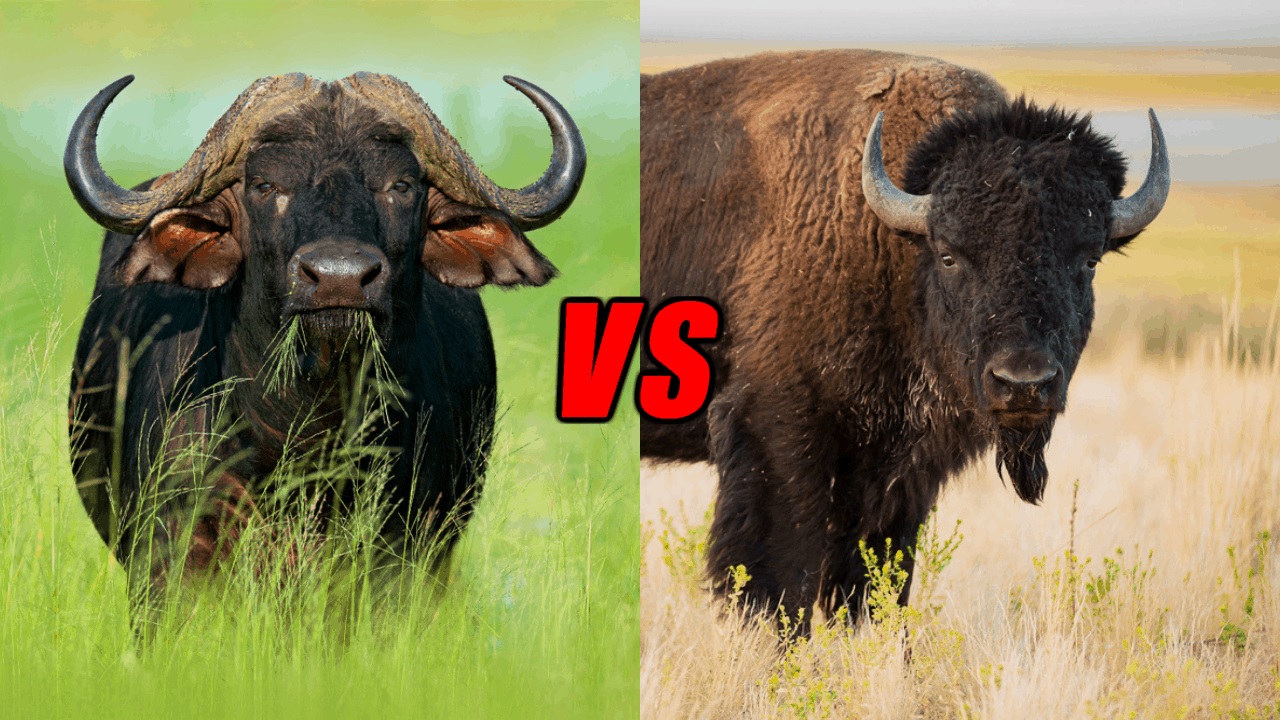When it comes to distinguishing between bison and buffalo, many people might scratch their heads in confusion. Although these terms are often used interchangeably, especially in North America, they refer to two distinct types of large, grass-eating mammals that belong to the Bovidae family. This blog post will delve into the key differences between bison and buffalo, exploring their physical characteristics, habitats, and other interesting facts that set them apart.
Physical Characteristics
Bison
Bison are massive, shaggy beasts predominantly found in North America. There are two species of bison: the American bison (Bison bison) and the European bison (Bison bonasus), also known as the wisent. The American bison is the more commonly known species, with two distinct subspecies: the plains bison and the wood bison. Bison are characterized by their humpbacked appearance, a result of their strong shoulder muscles. They have thick fur, especially around their head, shoulders, and forelimbs, which helps them endure harsh winter conditions. Male bison, known as bulls, can weigh up to 2,000 pounds, while females, called cows, are somewhat lighter.
Buffalo
Buffalo, on the other hand, primarily refer to two species found in Africa and Asia: The African buffalo (Syncerus caffer) and the Asian water buffalo (Bubalus bubalis). Unlike bison, buffalo do not have the large hump on their backs. African buffalos, also known as Cape buffalo, are robust animals with large, curved horns that are used for defense and combat. The Asian water buffalo has a more domesticated presence and is vital for agriculture in regions like India, China, and Southeast Asia. They are larger, with wide, sweeping horns that can span over 6 feet from end to end.
Habitat and Lifestyle
Bison
Bison are primarily found in the plains and forests of North America and Europe. Historically, American bison roamed in massive herds across the grasslands of North America, playing a crucial role in the ecosystems they inhabited. European bison, or wisents, were once widespread across Europe but now exist in protected reserves and parks due to past overhunting. Bison are known for their migratory behaviour, moving in search of food, which primarily consists of grasses.
Buffalo
African buffalos are native to sub-Saharan Africa, thriving in swamps, floodplains, grasslands, and forests. They are highly social animals, forming large herds that offer protection against predators like lions. Asian water buffalos are aptly named for their preference for living in wet, marshy areas, including wetlands and rivers. They have been domesticated for thousands of years and are used for plowing fields and transporting goods in many parts of Asia.
Conservation Status
Bison
The conservation story of the American bison is one of near extinction to recovery. By the late 19th century, intensive hunting and habitat destruction led to their numbers dwindling to just a few hundred. Conservation efforts in the 20th century have successfully increased their numbers, although they are still managed to maintain ecological balance. The European bison faced a similar fate but has been reintroduced into the wild from zoo populations.
Buffalo
The African buffalo is considered of “Least Concern” by the International Union for Conservation of Nature (IUCN), thanks to its large and stable population. However, it faces threats from habitat loss and diseases. The Asian water buffalo exists in both wild and domesticated forms. The wild population is classified as “Endangered,” primarily due to habitat loss and hunting, while the domesticated variety is widespread and not considered at risk.
In Summary
While bison and buffalo share some similarities, including their size and grass-based diet, they differ significantly in physical characteristics, habitat, and geographical distribution. Understanding these differences not only enriches our knowledge of the animal kingdom but also highlights the importance of conservation efforts to ensure these majestic creatures continue to thrive in their natural habitats. Whether it’s the humpbacked bison of the American plains or the horned giants of Africa and Asia, both animals command respect and admiration for their unique roles in our world’s ecosystems.




